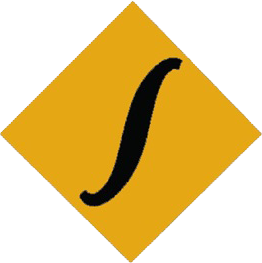NEB class 11 and 12 Physics new curriculum and syllabus
This curriculum presumes that the students joining grade 11 and 12 science stream come with diverse aspirations, some may continue to higher level studies in specific areas of science, others may join technical and vocational areas or even other streams. The curriculum is designed to provide students with general understanding of the fundamental scientific laws and principles that govern the scientific phenomena in the world. It focuses to develop scientific knowledge, skill competences and attitudes required at secondary level (grade 11-12) irrespective of what they do beyond this level, as envisioned by national goals.
NEB Class 11 and 12 Chapter summary
Chapter Summary of Physics (New NEB Curriculum syllabus Class 11 and 12) | |
| Class 11 | Class 12 |
Mechanics | |
| 1. Physical quantities | 1. Rotational dynamics |
| 2. Vectors | 2. Periodic motion |
| 3. Kinematics | 3. Fluid statics |
| 4.Dynamics | |
| 5. Work, energy and power | |
| 6. Circular motion | |
| 7. Gravitation | |
| 8. Elasticity | |
Heat and Thermodynamics | |
| 9. Heat and temperature | 4. First law of thermodynamics |
| 10. Thermal expansion | 5. Second law of thermodynamics |
| 11. Quantity of heat | |
| 12. Rate of heat flow | |
| 13. Ideal gas | |
Wave and optics | |
| 14. Reflection at curved mirror | 6. Wave motion |
| 15. Refraction at plane surfaces | 7. Mechanical waves |
| 16. Refraction through prisms | 8. Wave in pipes and strings |
| 17. lenses | 9. Acoustic phenomena |
| 18. Dispersion | 10. Nature and propagation of light |
| 11. Interference | |
| 12. Diffraction | |
| 13. Polarization | |
Electricity and Magnetism | |
| 19. Electric charges | 14. Electrical circuits |
| 20. Electric field | 15. Thermoelectric effects |
| 21. Potential, potential difference and potential energy | 16. Magnetic field |
| 22. Capacitor | 17. Magnetic properties of materials |
| 23. DC circuits | 18. Electromagnetic Induction |
| 19. Alternating currents | |
Modern physics | |
| 24. Nuclear physics | 20. Electrons |
| 25. Solids | 21. Photons |
| 26. Recent trends in physics | 22. Semiconductor devices |
| 23. Quantization of energy | |
| 24. Radioactivity and nuclear reaction | |
| 25. Recent trends in physics | |
NEB class 11 Physics syllabus
| Unit | Contents |
Mechanics | |
| 1. Physical quantities (3 hour) | 1.1. Precision and significant figures. Dimensions and uses of dimensional analysis. |
| 2. Vectors (4 hour) | 2.1. Triangle, parallelogram and polygon laws of vectors 2.2. Resolution of vectors; Unit vectors 2.3. Scalar and vector products. |
| 3. Kinematics (5 hour) | 3.1 Instantaneous velocity and acceleration 3.2 Relative velocity 3.3 Equation of motion(graphical treatment) 3.4 Motion of a freely falling body 3.5 Projectile motion and its applications. |
| 4.Dynamics (6 hour) | 4.1 Linear momentum, Impulse 4.2 Conservation of linear momentum 4.3 Application of Newton’s laws 4.4 Moment, torque and equilibrium 4.5 Solid friction: Laws of solid friction and their verifications. |
| 5. Work, energy and power (6 hour) | 5.1 Work done by a constant force and a variable force 5.2 Power 5.3 Work-energy theorem; Kinetic and potential energy 5.4 Conservation of Energy 5.5 Conservative and non-conservative forces 5.6 Elastic and inelastic collisions |
| 6. Circular motion (6 hour) | 6.1 Angular displacement, velocity and acceleration 6.2 Relation between angular and linear velocity and acceleration 6.3 Centripetal acceleration 6.4 Centripetal force 6.7 Conical pendulum 6.8 Motion in a vertical circle 6.9 Applications of banking. |
| 7. Gravitation (10 hour) | 7.1 Newton’s law of gravitation 7.2 Gravitational field strength 7.3 Gravitational potential; Gravitational potential energy 7.4 Variation in value of ‘g’ due to altitude and depth 7.5 Centre of mass and center of gravity 7.6 Motion of a satellite: Orbital velocity and time period of the satellite 7.7 Escape velocity 7.8 Potential and kinetic energy of the satellite 7.9 Geostationary satellite 7.10 GPS |
| 8. Elasticity (5 hour) | 8.1 Hooke’s law: Force constant 8.2 Stress; Strain; Elasticity and plasticity 8.3 Elastic modulus: Young modulus, bulk modulus, shear modulus 8.4 Poisson’s ratio 8.5 Elastic potential energy. |
Heat and Thermodynamics | |
| 9. Heat and temperature (3 hour) | 9.1 Molecular concept of thermal energy, heat and temperature, and cause and direction of heat flow 9.2 Meaning of thermal equilibrium and Zeroth law of thermodynamics. 9.3 Thermal equilibrium as a working principle of mercury thermometer. |
| 10. Thermal expansion (4 hour) | 10.1 Linear expansion and its measurement 10.2 Cubical expansion, superficial expansion and its relation with linear expansion 10.3 Liquid Expansion: Absolute and apparent 10.4 Dulong and Petit method of determining expansivity of liquid |
| 11. Quantity of heat (6 hour) | 11.1 Newton’s law of cooling 11.2 Measurement of specific heat capacity of solids and liquids 11.3 Change of phases: Latent heat 11.4 Specific latent heat of fusion and vaporization 11.5 Measurement of specific latent heat of fusion and vaporization 11.6 Triple point |
| 12. Rate of heat flow (5 hour) | 12.1 Conduction: Thermal conductivity and measurement 12.2 Convection 12.3 Radiation: Ideal radiator 12.4 Black- body radiation 12.5 Stefan – Boltzmann law. |
| 13. Ideal gas (8 hour) | 13.1 Ideal gas equation 13.2 Molecular properties of matter 13.3 Kinetic-molecular model of an ideal gas 13.4 Derivation of pressure exerted by gas, 13.5 Average translational kinetic energy of gas molecule 13.6 Boltzmann constant, root mean square speed 13.7 Heat capacities: gases and solids. |
Wave and optics | |
| 14. Reflection at curved mirror (2 hour) | 14.1 Real and Virtual images. 14.2 Mirror formula |
| 15. Refraction at plane surfaces (4 hour) | 15.1 Laws of refraction: Refractive index 15.2 Relation between refractive indices 15.3 Lateral shift 15.4 Total internal reflection. |
| 16. Refraction through prisms (3 hour) | 16.1 Minimum deviation condition 16.2 Relation between Angle of prism, minimum deviation and refractive index 16.3 Deviation in small angle prism. |
| 17. lenses (3 hour) | 17.1 Spherical lenses, angular magnification 17.2 Lens maker’s formula 17.3 Power of a lens |
| 18. Dispersion (3 hour) | 18.1 Pure spectrum and dispersive power 18.2 Chromatic and spherical aberration 18.3 Achromatism and its applications |
Electricity and Magnetism | |
| 19. Electric charges (3 hour) | 19.1 Electric charges 19.2 Charging by induction 19.3 Coulomb’s law- Force between two point charges 19.4 Force between multiple electric charges. |
| 20. Electric field (3 hour) | 20.1 Electric field due to point charges; Field lines 20.2 Gauss Law: Electric Flux 20.3 Application of Gauss law: Field of a charge sphere, line charge, charged plane conductor |
21. Potential, potential difference and potential energy (4 hour) | 21.1 Potential difference, Potential due to a point, Charge, potential energy, electron volt 21.2 Equipotential lines and surfaces 21.3 Potential gradient |
| 22. Capacitor (7 hour) | 22.1 Capacitance and capacitor 22.2 Parallel plate capacitor 22.3 Combination of capacitors 22.4 Energy of charged capacitor 22.5 Effect of a dielectric Polarization and displacement. |
| 23. DC circuits (10 hour) | 23.1 Electric Currents; Drift velocity and its relation with current 23.2 Ohm’s law; Electrical Resistance; Resistivity; Conductivity 23.3 Current-voltage relations; Ohmic and Non-Ohmic resistance 23.4 Resistances in series and parallel, 23.5 Potential divider 23.6 Electromotive force of a source, internal resistance 23.7 Work and power in electrical circuits |
Modern physics | |
| 24. Nuclear physics (6 hour) | 24.1 Nucleus: Discovery of nucleus 24.2 Nuclear density; Mass number; Atomic number 24.3 Atomic mass; Isotopes 24.4 Einstein’s mass-energy relation 24.5 Mass Defect, packing fraction, BE per nucleon 24.6 Creation and annihilation 24.7 Nuclear fission and fusion, energy released |
| 25. Solids (3 hour) | 25.1 Energy bands in solids (qualitative ideas) 25.2 Difference between metals, insulators and semi-conductors using band theory 25.3 Intrinsic and extrinsic semi- conductors |
| 26. Recent trends in physics (6 hour) | 26.1 Particle physics: Particles and antiparticles, Quarks (baryons and meson) and leptons (neutrinos) 26.2 Universe: Big Bang and Hubble law: expansion of the Universe, Dark matter, Black Hole and gravitational wave |
NEB class 12 Physics syllabus
| Unit | Content |
Mechanics | |
| 1. Rotational dynamics | 1.1 Equation of angular motion, Relation between linear and angular kinematics 1.2 Kinetic energy of rotation of rigid body 1.3 Moment of inertia; Radius of gyration 1.4 Moment of inertia of a uniform rod 1.5 Torque and angular acceleration for a rigid body 1.6 Work and power in rotational motion 1.7 Angular momentum, conservation of angular momentum. |
| 2. Periodic motion | 2.1 Equation of simple harmonic motion (SHM) 2.2 Energy in SHM 2.3 Application of SHM: vertical oscillation of mass suspended from coiled spring 2.4 Angular SHM, simple pendulum 2.5 Oscillatory motion: Damped oscillation, Forced oscillation and resonance. |
| 3. Fluid statics | 3.1 Fluid statics: Pressure in a fluid; Buoyancy 3.2 Surface tension: Theory of surface tension; Surface energy 3.3 Angle of contact, capillarity and its applications 3.4 FluidDynamics:Newton’s formula for viscosity in a liquid; Coefficient of viscosity 3.5 Poiseuille’s formula and its application 3.6 Stokes law and its applications 3.7 Equation of continuity and its applications 3.8 Bernoulli’s equation and its applications. |
Heat and Thermodynamics | |
| 4. First law of thermodynamics | 4.1 Thermodynamic systems 4.2 Work done during volume change 4.3 Heat and work; Internal energy and First law of thermodynamics 4.4 Thermodynamic processes: Adiabatic, isochoric, isothermal and isobaric 4.5 Heat capacities of an ideal gas at constant pressure and volume and relation between them 4.6 Isothermal and Adiabatic processes for an ideal gas. |
| 5. Second law of thermodynamics | 5.1 Thermodynamic systems and direction of thermodynamic processes 5.2 Second law of thermodynamics 5.3 Heat engines 5.4 Internal combustion engines: Otto cycle, Diesel cycle; Carnot cycle 5.5 Refrigerator 5.6 Entropy and disorder (introduction only) |
Wave and optics | |
| 6. Wave motion | 6.1 Progressive waves 6.2 Mathematical description of a wave 6.3 Stationary waves |
| 7. Mechanical waves | 7.1 Speed of wave motion; Velocity of sound in solid and liquid 7.2 Velocity of sound in gas 7.3 Laplace’s correction 7.4 Effect of temperature, pressure, humidity on velocity of sound. |
| 8. Wave in pipes and strings | 8.1 Stationary waves in closed and open pipes 8.2 Harmonics and overtones in closed and open organ pipes 8.3 End correction in pipes 8.4 Velocity of transverse waves along a stretched string 8.5 Vibration of string and overtones 8.6 Laws of vibration of fixed string. |
| 9. Acoustic phenomena | 9.1 Sound waves: Pressure amplitude 9.2 Characteristics of sound: Intensity; loudness, quality and pitch 9.3 Doppler’s effect. |
| 10. Nature and propagation of light | 10.1 Huygen’s principle 10.2 Reflection and Refraction according to wave theory |
| 11. Interference | 11.1 Phenomenon of Interferences: Coherent sources 11.2 Young’s double slit experiment. |
| 12. Diffraction | 12.1 Diffraction from a single slit 12.2 Diffraction pattern of image; Diffraction grating 12.3 Resolving power of optical instruments. |
| 13. Polarization | 13.1 Phenomenon of polarization 13.2 Brewster’s law; transverse nature of light 13.3 Polaroid. |
Electricity and Magnetism | |
| 14. Electrical circuits | 14.1 Kirchhoff’s law 14.2 Wheatstone bridge circuit; Meter bridge 14.3 Potentiometer: Comparison of e.m.f., measurement of internal resistances of a cell 14.4 Super conductors; Perfect conductors 14.5 Conversion of galvanometer into voltmeter and ammeter; Ohmmeter 14.6 Joule’s law |
| 15. Thermoelectric effects | 15.1 Seebeck effect; Thermocouples 15.2 Peltier effect: Variation of thermoelectric e.m.f. with temperature; Thermopile |
| 16. Magnetic field | 16.1 Magnetic field lines and magnetic flux; Oersted’s experiment 16.2 Force on moving charge; Force on a conductor 16.3 Force and Torque on rectangular coil, Moving coil galvanometer 16.4 Hall effect 16.5 Magnetic field of a moving charge 16.6 Biot and Savart law and its application to (i) a circular coil (ii) a long straight conductor (iii) a long solenoid 16.7 Ampere’s law and its applications to (i) a long straight conductor (ii) a straight solenoid (ii) a toroidal solenoid 16.8 Force between two parallel conductors carrying current- definition of ampere |
| 17. Magnetic properties of materials | 17.1 Magnetic field lines and magnetic flux 17.2 Flux density in magnetic material; Relative permeability; Susceptibility 17.3 Hysteresis 17.4 Dia,-para- and ferro-magnetic materials |
| 18. Electromagnetic Induction | 18.1 Faraday’s laws; Induced electric fields 18.2 Lenz’s law, Motional electromotive force 18.3 A.C. generators; Eddy currents 18.4 Self-inductance and mutual inductance 18.5 Energy stored in an inductor 18.6 Transformer. |
| 19. Alternating currents | 19.1 Peak and rms value of AC current and voltage 19.2 AC through a resistor, a capacitor and an inductor 19.3 Phasor diagram 19.4 Series circuits containing combination of resistance, capacitance and inductance 19.5 Series resonance, quality factor 19.6 Power in AC circuits: power factor |
Modern physics | |
| 20. Electrons | 20.1 Milikan’s oil drop experiment, 20.2 Motion of electron beam in electric and magnetic fields 20.3 Thomson’s experiment to determine specific charge of electrons |
| 21. Photons | 21.1 Quantum nature of radiation 21.2 Einstein’s photoelectric equation; Stopping potential 21.3 Measurement of Plank’s constant |
| 22. Semiconductor devices | 22.1 P-N Junction 22.2 Semiconductor diode: Characteristics in forward and reverse bias 22.3 Full wave rectification 22.5 Logic gates; NOT, OR, AND, NAND and NOR. |
| 23. Quantization of energy | 23.1 Bohr’s theory of hydrogen atom 23.2 Spectral series; Excitation and ionization potentials 23.3 Energy level; Emission and absorption spectra 23.4 De Broglie Theory; Duality 23.5 Uncertainly principle 23.6 X-rays: Nature and production; uses 23.7 X-rays diffraction, Bragg’s law. |
| 24. Radioactivity and nuclear reaction | 24.1 Alpha-particles; Beta-particles, Gamma rays 24.2 Laws of radioactive disintegration 24.3 Half-life, mean-life and decay constant 24.4 Geiger-Muller Tube 24.5 Carbon dating 24.6 Medical use of nuclear radiation and possible health hazard. |
| 25. Recent trends in physics | 25.1 Surface waves: Rayleigh and Love waves Internal waves: S and P-waves Wave patterns of Gorkha Earthquake 2015 25.2 Gravitational Wave Nanotechnology Higgs Boson |



